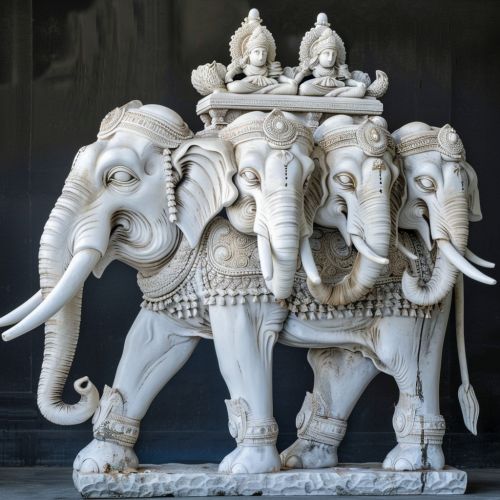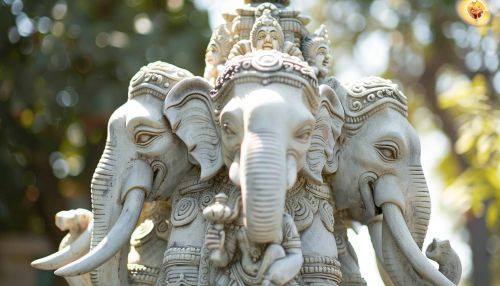Airavata
Mythology
In Hindu mythology, Airavata is a significant figure, known as the king of elephants. Airavata is a white elephant who carries the Hindu god Indra. It is said to have been produced during the churning of the ocean, a mythological event known as the Samudra manthan. Airavata is also associated with water and fertility, and is often depicted with multiple heads and tusks.


Origin
The origin of Airavata is deeply rooted in Hindu mythology. The story begins with the Devas (gods) and Asuras (demons) churning the ocean of milk in search of Amrita, the nectar of immortality. This event, known as the Samudra manthan, produced several divine beings and objects, one of which was Airavata.
Description
Airavata is often depicted as a white elephant with multiple heads and tusks. The number of heads varies in different depictions, ranging from three to a thousand. Each of Airavata's tusks is said to be as long as a pole of a chariot. The elephant is also described as having the ability to produce clouds, which is why it is often associated with water and fertility.
Role in Hinduism
In Hinduism, Airavata plays a significant role. It is considered the mount (vahana) of Indra, the king of the Devas and the god of rain and thunderstorms. Airavata's association with water and its ability to produce clouds ties in with Indra's role as the god of rain.
Airavata is also worshipped in certain regions of India, particularly in the state of Rajasthan, where elephants are revered. During certain religious festivals, elephants are decorated and paraded through the streets in honor of Airavata.
Cultural Significance
Beyond mythology, Airavata holds cultural significance in India and other countries influenced by Hinduism. The image of a white elephant is considered auspicious and is often used in art and architecture. For instance, in Thailand, the Erawan Museum is shaped like a three-headed elephant, inspired by Airavata.
